Gut Inflammation (60 Capsules) (Stable BPC-157, KPV, PEA, Tributyrin)
SKU
$315.00
Each capsule contains 500mcg Stable BPC-157, 500mcg KPV, 400mg PEA, 400mg Tributyrin
BPC-157 is a synthetic derivative of naturally occurring body protection compound (BPC), known for its anti-inflammatory and wound healing properties. BPC-157 is stable in human gastric juice, during prolonged storage, and when exposed to UV light. It possesses enhanced oral bioavailability (greater than 90%). Animal studies indicate that BPC157 may significantly improve gastrointestinal healing from ulcers, colitis, irritable bowel syndrome, and other inflammatory bowel diseases.
KPV is an anti-inflammatory peptide that has potential to help decrease inflammation in a wide range of intestinal diseases such as Crohn’s disease and Ulcerative Colitis. It decreases the inflammatory response by inhibiting proinflammatory cytokine synthesis and secretion. KPV has been shown to stop the proinflammatory mechanisms in both intestinal epithelial cells and immune cells. KPV has shown promise in the case of Inflammatory Bowel Diseases through inhibited immune responses. KPV has also been shown to support healing of the mucosal lining of the gut which helps to stabilize Ulcerative Colitis. In one study KPV was given to mice with Ulcerative Colitis. These mice experienced significant improvements in body weight, colon length and disease symptoms.
PEA is a fatty acid amide molecule involved in a variety of cellular functions in chronic pain and inflammation. It has been shown to have neuroprotective, anti-inflammatory, anti-nociceptive (antipain) properties. The most important and promising indications for PEA are linked to neuropathic and chronic pain and inflammation such as gastro-intestinal inflammation, diabetic neuropathic pain, sciatic pain, CRPS, pelvic pain and entrapment neuropathic pain.
Tributyrin is a natural triglyceride that decreases inflammatory signaling by TNF-alpha, interleukin-1B, and interleukin-6. Studies show that Tributyrin regulates tight junctions to bolster intestinal barrier function. This may help to reduce the number of inflammatory particles that cross from the intestinal lumen (where food is) into the body, thereby preventing gut inflammation from starting. It also boosts expression of vitamin D3 receptors. Studies show that Tributyrin regulates tight junctions to bolster intestinal barrier function.Tributyrin may improve immune function, increase mucus production in the GI tract, and accelerate gastrointestinal wound healing.
Synergy Between BPC 157, KPV, PEA, and Tributyrin
Individually, BPC 157, PEA, Tributyrin, and KPV offer substantial benefits in fighting inflammation, particularly of the GI tract. In combination, the four act synergistically to regulate inflammation via several different but overlapping pathways. Together, these four compounds help produce enhanced anti-inflammatory effects by:
• reducing cyclooxygenase-2 signaling,
• substantially reducing TNF-alpha levels,
• activating nuclear transcription factors responsible for controlling the immune system,
• improving gastric mucous secretion and function
• enhancing intestinal barrier function.
Gut inflammation research capsules contain 250mcg Stable BPC-157 Arginate Form, 500mcg Larazotide, 500mcg KPV. This research product has the ability to treat numerous gut problems such as gluten intolerance, inflammatory bowel disease, and auto-immune diseases such as Type 1 diabetes and Hashimoto’s thyroiditis.
PRODUCT USAGE WARNING : This PRODUCT IS INTENDED AS A RESEARCH CHEMICAL ONLY. This designation allows the use of research chemicals strictly for in vitro testing and laboratory experimentation only. All product information available on this website is for educational purposes only. Bodily introduction of any kind into humans or animals is strictly forbidden by law. This product should only be handled by licensed, qualified professionals. This product is not a drug, food, or cosmetic and may not be misbranded, misused or mislabled as a drug, food or cosmetic.
Description
BUY BPC 157, KPV, TRIBUTYRIN, AND PEA PEPTIDE FOR SALE ONLINE
Synergy for Gut Inflammation and Gut Repair: BPC 157, KPV, PEA, and Tributyrin
BPC-157 + KPV combination therapy may support your weight loss journey by promoting faster healing, reducing inflammation, and potentially enhancing metabolic function. BPC 157, KPV, PEA, and tributyrin are all compounds with important functions in the gastrointestinal tract. Their properties overlap, but are different enough that researching them together may provide synergistic benefits in the setting of intestinal inflammation. The next step into research of these peptides would be to determine if their combined properties might offer substantial benefit in the setting of inflammatory bowel disease and other intestinal inflammation.
To understand how these peptides work together in the gut, it is important to first understand their individual properties. Those looking to develop experimental protocols for combinations of these peptides would do well to start with the lengthy research supporting each. Overarching these include control of systemic inflammatory responses, improvement of intestinal barrier function, reduction of inflammation in adipose tissue, control of inflammatory cytokine signaling (especially TNF-alpha), and reduction in immune responses to intestinal inflammatory signals.
Each of these products is naturally occurring, making them of even great interest to inflammation researchers because they are easier to isolate and produce, offer a reduced risk/side effect profile, and can be used to explore natural inflammatory pathways and the interactions that occur between them.
BPC 157, KPV, Tributyrin, and PEA Peptide For Sale online only at USA Peptide Store where you can buy USA Research Peptides online. Shop over 100 research peptides online now for fast shipping and the best deal! Buy in bulk and Save! USA Peptide Store Your #1 Trusted USA Research Peptides Supplier. If this product does not meet your needs or interests, you may want to look at Longevity, Performance & Obesity Research (60 Capsules) (5-Amino-1MQ, NMN, JBSNF). Please visit this link for further information on our Research Peptides Capsules
What Is Stable BPC157 ?
BPC 157 is a synthetic derivative of the naturally occurring protein known as body protection compound (BPC). BPC was first isolated form the human gastrointestinal tract where it is known to have anti-inflammatory and healing properties. It has been investigated in phase I clinical trials for the treatment of gastrointestinal ulcers as well as tendon and muscle injuries. BPC 157 is one of the rare anti-inflammatories to also possess angiogenic properties as well. It possesses enhanced oral bioavailability (greater than 90%). Animal studies indicate that BPC157 may significantly improve gastrointestinal healing from ulcers, colitis, irritable bowel syndrome, and other inflammatory bowel diseases.
Sequence: Gly-Glu-Pro-Pro-Pro-Gly-Lys-Pro-Ala-Asp-Asp-Ala-Gly-Leu-Val
Molecular Formula: C62H98N15O22
Molecular Weight: 1419.556 g/mol
PubChem CID: 108101
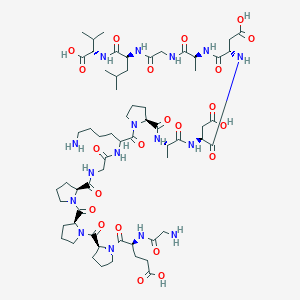
What Is KPV?
KPV is a synthetic analogue of alpha-melanocyte stimulating hormone. Made up of three amino acids, KPV is known to retain the properties of the much larger alpha-MSH protein including anti-ischemic and anti-inflammatory properties. It is under active investigation as a potential treatment for inflammatory bowel disease.
KPV is a potent general anti-inflammatory, but its true benefit is in its ability to reduce intestinal inflammation in mouse models of inflammatory bowel disease. Research shows that the peptide can reduce inflammatory infiltrates, MPO activity, and histological evidence of inflammation. Research in mice shows that KPV can accelerate clinical recovery and improve weight gain in the setting of IBD.
Research shows that KPV is a potent suppressor of TNF-alpha and that its effects can be targeted to the intestine with the proper delivery mechanism. This is important because TNF-alpha is a driver of inflammation in IBD and a target of current therapeutics like infliximab (Remicade/Inflectra) and adalimumab (Humira). These medications are effective early in their use, but lose efficacy due to the formation of systemic antibodies against them over time. They also carry with them a host of substantial, if rare, side effects. The ability to target anti-TNF-alpha activity to the intestine could help to thwart these drawbacks and would also allow for higher dosing and thus better disease control.
Amino Acid Sequence: Lys-Pro-Val
Molecular Formula: C16H30N4O4
Molecular Weight: 342.43 g/mol
PubChem CID: 125672
CAS Number: 67727-97-3
Synonyms: MSH (11-13), ACTH(11-13), alpha-MSH(11-13)
Source: PubChem
What Is PEA?
Palmitoylethanolamide (PEA) is a naturally occurring fatty acid amide produced from a combination of palmitic acid and ethanolamine. It binds to the peroxisome proliferator-activated receptor alpha (PPAR-a) as well as to cannabinoid-like G-coupled receptors GPR55 and GPR119 to influence pain and chronic inflammation. It also inhibits cyclooxygenase-2 signaling.
Research shows that PEA influences pain perception in at least two different ways. The first, and perhaps most important way in which PEA alters pain is via its anti-inflammatory actions. These actions are mediated through the PPAR-a receptor and through effects on NF-kappaB signaling.
Research in mouse models shows that PEA attenuates inflammation by activating PPAR-alpha. PPAR-alpha is a nuclear receptor protein that acts as a transcription factor. While originally of interest for its ability to regulate lipid metabolism in the liver, PPAR-alpha has since been found to have anti-inflammatory properties. PPAR alpha is found in liver, kidney, heart, muscle, and adipose tissue in high quantities and in many other tissues in somewhat lower quantities. A number of prescription anti-diabetic and metabolic syndrome drugs target PPAR-alpha.
The ability of PEA to alleviate pain via an alternative to PPAR-alpha stimulation has been demonstrated in mouse models. In these studies, PEA was found to bind to the cannabinoid CB2 receptor in a manner similar to the endogenous cannabinoid (endocannabinoid) anandamide. This allows PEA to alleviate the perception of pain (nociception), but this effect is limited to pain controlled by the CB2 receptor, which has no impact on thermal pain or capsaicin-induced pain. Because PEA is a naturally occurring molecule, it is likely that the cannabinoid CB2 receptor is its native target along with PPAR-alpha.
PPAR-alpha and endocannabinoid action are not the only mechanisms by which PEA seems to operate though. Research in mice indicates that PEA inhibits NF-kappaB nuclear signaling in the dorsal rout ganglia of spinal nerves. This results in significant reductions in cyclooxygenase-2 (COX-2) expression in the central nervous system and subsequent reductions in nerve pain and pain signaling in general. COX-2 is the target of anti-inflammatories like ibuprofen, Celebrex, and Aleve.
Molecular Formula: C18H37NO2
Molecular Weight: 299.5 g/mol
PubChem CID: 4671
CAS No: 544-31-0
Alternative Names: PEA, N-PEA, Palmidrol, Impulsin, Loramine P256, Hexadecanamide
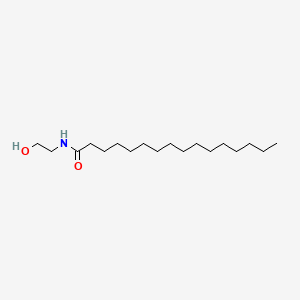
The properties of PEA extend beyond pain relief and reduction in inflammation. Research in mice shows that PEA has anticonvulsant activities. The effective dose is similar to that of prescription anticonvulsants, but PEA does not appear to cause neurological impairment. The anti-convulsant effect of PEA is likely mediated through its actions on the CB2 receptor of the endocannabinoid system. This is the same receptor that mediates PEA’s anti-nociceptive activity. Action at this receptor has been shown to attenuate neurological damage and reduce infarct size following simulated stroke in the laboratory. It is thought that CB2 activation may help to reduce inflammation in the central nervous system and that this may lead to improvements in seizure thresholds and offer neurons protection against inflammatory processes.
What Is Tributyrin?
Tributyrin is a triglyceride (fat) found naturally in butter. Research shows that, within the body, tributyrin is converted to butyric acid. Butyric acid has been found to have anti-proliferative effects, slowing the growth of certain cells like colon cancer cells. Research shows that this anti-proliferative effect is the result of overexpression, induced by tributyrin, of the vitamin D3 receptor.
Molecular Formula: C15H26O6
Molecular Weight: 302.36 g/mol
PubChem CID: 6050
CAS No: 560-01-5
Alternative Names: tributin, butyrin, tributyroin, NSC 661583
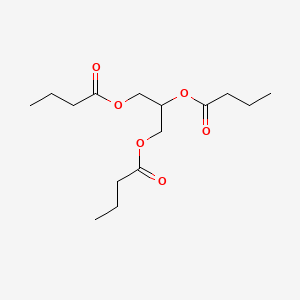
Tributyrin doesn’t just reduce proliferation though. Research using human colon cancer cell lines shows that tributyrin increases rates of cellular differentiation. This effect is also a result of tributyrin’s impact on the vitamin D receptor. In fact, administration of vitamin D and tributyrin together enhances the efficacy of both substances and leads to significant changes in tumor cell growth and inflammation. A large body of evidence has shown, for some time now, that vitamin D is a potent anti-inflammatory vitamin. Upregulation of its receptors could have a profound anti-inflammatory effect in and of itself.
The benefits of tributyrin extend well beyond its effects on vitamin D receptors thought. It has long been known that high fiber diets are beneficial for reducing the risk of colon cancer. Following the findings of tributyrin above, scientists wondered if the benefit provided by fiber was actually a result of the fact that fiber increases the production of butyrate by bacteria that live naturally in the intestine. Research in pigs suggests that this may, in fact, be the case. The mechanism, it seems, has to do with reduced inflammation and enhanced mitochondrial function. It would appear that tributyrin decreases mRNA transcripts of tumor necrosis factor-alpha, interferon-gamma, and interleukin-6. All of these are inflammatory mediators. TNF-alpha, in particular has been linked to a number of serious inflammatory diseases such as inflammatory bowel disease, rheumatoid arthritis, and psoriasis.
The impact of tributyrin on inflammation is quite multidimensional. Research in mice suggests that butyrate may attenuate intestinal inflammation and improve intestinal barrier function via activation of transcription factor HIF-1 in intestinal cells. At the same time, research in obese mice shows that tributyrin induces an anti-inflammatory state in adipose tissue by reducing TNF-alpha signaling as well as levels of certain pro-inflammatory cytokines mentioned above. The development of inflammation in fat tissue has long been thought to be a primary driver of insulin resistance and type 2 diabetes. Mice in the study who were given tributyrin support this fact by having lower body weight and improved glucose handling as a result of improved insulin responsiveness.
There is even research showing that tributyrin can reduce the inflammatory responses of immune cells to heat stress, making it a potential treatment for heat-induced illness. Research in cows reveals tributyrin significantly reduces TNF-alpha, interleukin-1B, and interleukin-6 levels. This, in turn, inhibits the lymphocyte inflammatory response.
Simply put, tributyrin is a potent anti-inflammatory with specific effects on IL-1B, IL-6, and TNF-alpha. The impact that tributyrin has on these cytokines not only reduces inflammation, it improves the function of the immune system, bolsters intestinal barrier function to reduce the risk of further inflammation, and reduces the risk and severity of colon cancer.
Synergy Between BPC-157, KPV, PEA, and Tributyrin
Individually, BPC 157, PEA, tributyrin, and KPV offer substantial benefits in fighting inflammation, particularly of the GI tract. However, there is reason to believe that a combination of the four could be synergistic due to the fact that they each regulate inflammation in a different way while overlapping in some regards. Administration of all four compounds could produce enhanced effects both by target the same inflammatory systems in different ways and by targeting different inflammatory systems to provide an overall greater anti-inflammatory response.
Starting with PEA, its primary effect is to prevent inflammation from occurring at a central level by inhibiting PPAR-alpha signaling as well as cyclooxygenase-2 (COX-2) induced inflammation. The effect of PPAR-alpha inhibition is also seen at the tissue level, offering a kind of two-step approach to reducing inflammation via this pathway.
PEA also inhibits inflammation in adipose tissue, a known risk factor for insulin resistance, glucose intolerance, and intestinal inflammation. Thus, PEA inhibits inflammation in multiple ways that all benefit the GI tract either directly or indirectly. It also stimulates endocannabinoid receptors, which help to reduce pain thought not inflammation directly.
Tributyrin has several beneficial effects when it comes to gut inflammation. First, it improves intestinal barrier function via regulation of tight junctions. This can help to reduce the number of inflammatory particles that cross from the intestinal lumen (where food is) into the body. Thus, tributyrin can actually prevent gut inflammation from occurring in the first place.
Tributyrin has also been shown to down regulate expression of several inflammatory cytokines, especially TNF-alpha, which has been linked to serious inflammatory conditions like ulcerative colitis and Crohn’s disease. There is even research to suggest that the ability of tributyrin to regulate these inflammatory cytokines may have a global anti-inflammatory effect as a result of down regulating immune inflammation. Like PEA, tributyrin reduces inflammation in adipose tissue and thus may help to reduce the long-term risk of insulin resistance and diabetes.
BPC 157 improves gastric mucus secretion and thus protects the cells that line the GI tract from damage. There is also substantial research suggesting that BPC 157 helps to connect the GI tract to the brain by acting as a signaling molecule. Dr. Rudolf Rucman, an early BPC 157 researcher who helped to develop the orally active arginate salt version of BPC 157, has shown that BPC 157 helps to coordinate the adaptive immune response to stress and promote systemic healing. Thus, BPC 157 not only assists tributyrin in maintaining intestinal barrier function, it also assists tributyrin in regulating inflammation by altering the immune response to stress.
Once the immune system is stimulated, it sends out signals to the rest of the body to recruit more inflammatory cells to the specific site. One of those signals is TNF-alpha. Currently, a number of drugs to treat rheumatoid arthritis, inflammatory bowel disease, psoriasis, and a host of other autoimmune diseases target TNF-alpha to help calm the inflammatory response and restore health. Research shows that KPV has a similar effect and that this effect can be limited to the GI tract through proper delivery of the peptide. Thus, KPV offers the third arm of this synergistic triad by regulating inflammation once it has begun. Interestingly, TNF-alpha has been shown to interrupt tight junctions, thus worsening any underlying tight junction dysfunction. By regulating TNG-alpha, KPV can help to restore tight junction function and thus works synergistically with tributyrin to further reduce intestinal leakiness. As both compounds impact TNF-alpha signaling, there is likely to be substantial synergy in reducing this particular inflammatory cytokine.
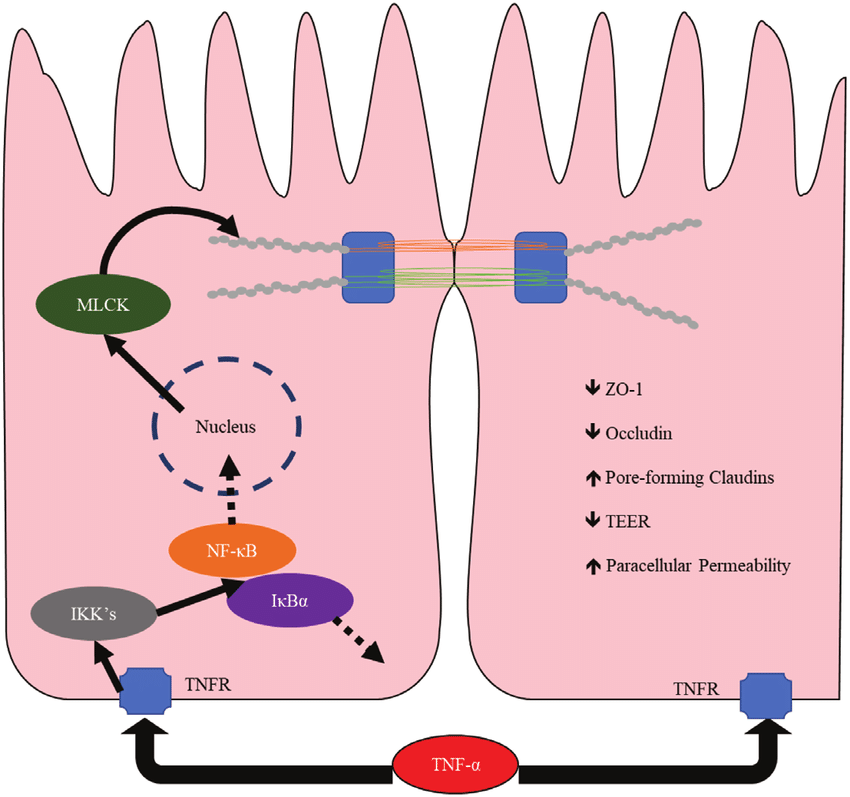
In summary, tributyrin and BPC 157 both help to regulate intestinal barrier function and thus act as the first line of defense against inflammation by preventing injury in the first place. They also offer a second line of defense by helping to coordinate systemic inflammatory responses and push the balance away from inflammation and toward wound repair.
A second step in the process of reducing gut inflammation is offered via KPV and tributyrin. Their ability to suppress inflammatory signaling and TNF-alpha inflammation in particular makes them potent regulators of inflammation. They essentially help to turn down the immune response once it has begun and can help to restore immune balance in settings like inflammatory bowel disease.
The final aspect of benefit is added by PEA, which offers global inflammation reduction through alterations in gene expression and PPAR-alpha signaling. PEA can be thought of as setting the overarching environment of inflammation by impeding signals from things like COX-2. This reduces systemic inflammation and provides a favorable environment for tissue-level approaches to work.
Synergy in Wound Healing
BPC 157 has long been known to promote wound healing. This is primarily a result of the peptide’s ability to upregulate and activate VEGFR2, one of the more important receptors for VEGF. VEGF, short for vascular endothelial growth factor is a simulator of blood vessel growth. Just like growth hormone promotes the growth of bones and muscles, VEGF promotes the growth of blood vessels, which are essential for wound repair.
The ability of BPC 157 to boost blood vessel growth meshes well with the ability of KPV to regulate the migration of inflammatory cells. One of the primary problems in wound healing is the formation of scars, particularly scars that are of different pigment than surrounding tissue. KPV induces wound repairing fibroblasts and other cells to migrate to the site of tissue repair, but prevents pigment-containing melanocytes from doing the same. This results in a superior aesthetic look to the scar without compromising overall wound healing.
The benefits of KPV in wound healing are more robust than simply improving the appearance of scars, however, KPV is one of the few known compounds that can reduce inflammation at the site of a wound without increasing the risk of infection, fungal growth, and tissue damage due to pathogens. In other words, KPV combines anti-inflammatory activity with pathogen-fighting capabilities that make it ideal for promoting wound healing.
Finally, KPV may be beneficial in that it can modulate collagen metabolism. While collagen is essential to tissue healing and wound repair, excessive or disordered collagen deposition can lead to a host of problems including hypertrophic scar formation. According to Dr. Didier Merlin, KPV suppresses IL-8 secretion, which inhibits collagen type 1 production. This is an important part of the last phase of wound healing when collagen deposition patterns can mean the difference between a strong, lasting wound repair and disordered, weak scar that is easily damaged.
The Specific Case of BPC 157, KPV, PEA, and Tributyrin in Fistula Repair
Fistulas are simply abnormal passageways between two organs that do not normally connect. A good example is the perianal fistula that connects the colon to the skin around the anus and leads to abnormal drainage and potential infection. Fistulas are common in inflammatory diseases of the GI tract, such as Crohn’s disease and ulcerative colitis. They are also notoriously difficult to treat and can affect individuals who suffer from them for years or even a lifetime.
Both KPV and BPC 157 have shown a great deal of promise in improving fistula healing, a specific case of wound healing. BPC 157 has been shown in rat studies to improve healing of GI fistulas by accelerating the rate of repair and leading to more frequent closure of the fistula.
Often times, fistula healing can be boosted by the direct injection of TNF-alpha inhibitors, like Humira, directly into the fistula. This is an expensive and difficult process that is not without side effects. KPV and tributyrin may offer an alternative by delivering TNF-alpha suppression directly to the GI tract without the need for invasive injections. Combined with BPC 157, this could result in a dramatic increase in fistula healing. By boosting tight junction function, tributyrin could slow the progression of fistulas and even reverse the process.
A Summary of Gut Inflammation
It is often said that all health starts in the gut. Whether this is perfectly accurate or not, there is no arguing that the GI tract is an important component of nutrition, immune function, and overall health. The compounds discussed above have a multitude of anti-inflammatory effects on the gut that, when combined, are likely to provide synergistic benefits in gut inflammation. PEA provides a kind of global protection by reducing both systemic and tissue inflammation. This is then built upon by KPV and tributyrin, which reduce inflammatory signaling from cytokines like TNF-alpha and improve tight junction functionality. BPC 157 provides the final benefit by boosting rates of wound healing and tissue repair without triggering any additional inflammatory response. These natural compounds work synergistically to help to establish a low-inflammation state in the GI tract to allowing healing and optimal functioning.
BPC 157, KPV, Tributyrin, and PEA exhibits minimal side effects and good oral bioavailability in mice. Per kg dosage in mice does not scale to humans. BPC 157, KPV, Tributyrin, and PEA for sale at USA Peptide Store is limited to educational and scientific research only, not for human consumption. Only buy BPC 157, KPV, Tributyrin, and PEA if you are a licensed researcher.
Buy Wholesale BPC 157, KPV, Tributyrin, and PEA From USA Peptide Store
At USA Peptide Store, our research peptides are of the highest purity and pharmaceutical grade. Our BPC 157, KPV, Tributyrin, and PEA peptide comes in 500mcg Stable BPC-157 Arginate, 500mcg KPV, 400mg PEA, 400mg Tributyrin (60 capsules). We’re passionate about our products, and we always strive to provide our customers with the best in both selection and quality. All of the products we provide are tested to verify authenticity and purity, so you can conduct your research with confidence.
Searching for BPC 157, KPV, Tributyrin, and PEA peptide for sale? Look no further! Our online peptide store offers a wide range of BPC 157, KPV, Tributyrin, and PEA peptide, perfect for your research needs. Whether you’re in the United States, Australia, Canada, Germany, Sweden, France, Turkey, Thailand, Italy, Netherlands or the United Kingdom, we have you covered. We provide fast and secure shipping to multiple countries, ensuring that you receive your order conveniently and on time. Purchase BPC 157, KPV, Tributyrin, and PEA peptide that are now available for sale and in stock. With our competitive prices and extensive inventory, you can trust us to be your reliable source for Gut Inflammation (60 Capsules) (Stable BPC-157, KPV, PEA, Tributyrin).
Want to learn more about our products or have a question about payment options? Our customer service team is here to help. So, what are you waiting for? order BPC 157, KPV, Tributyrin, and PEA Peptide For Sale and experience first-hand quality service, prompt response and quick shipping. Stock up on the highest quality BPC 157, KPV, Tributyrin, and PEA Peptide For Sale and more at USA Peptide Store today.
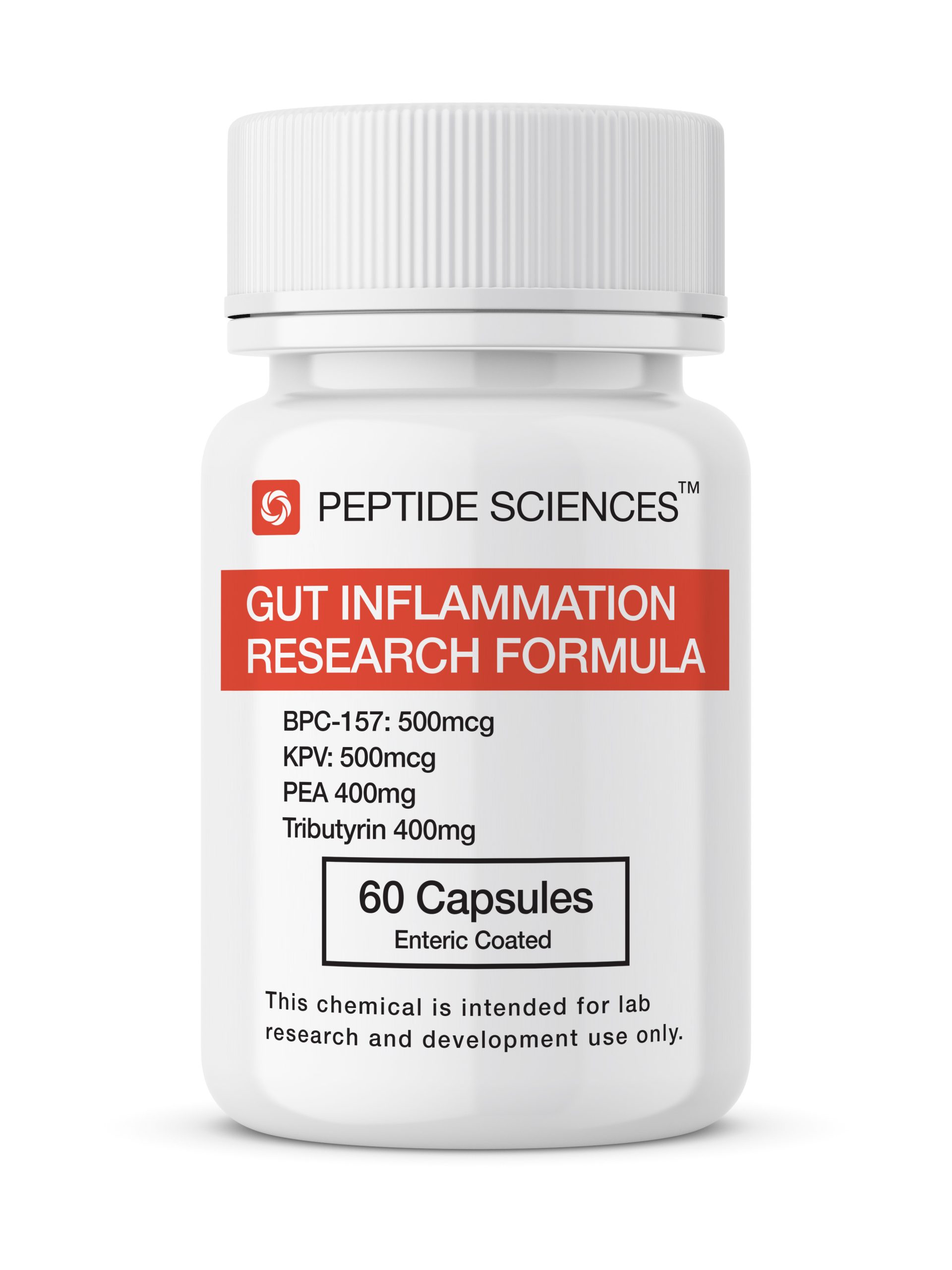
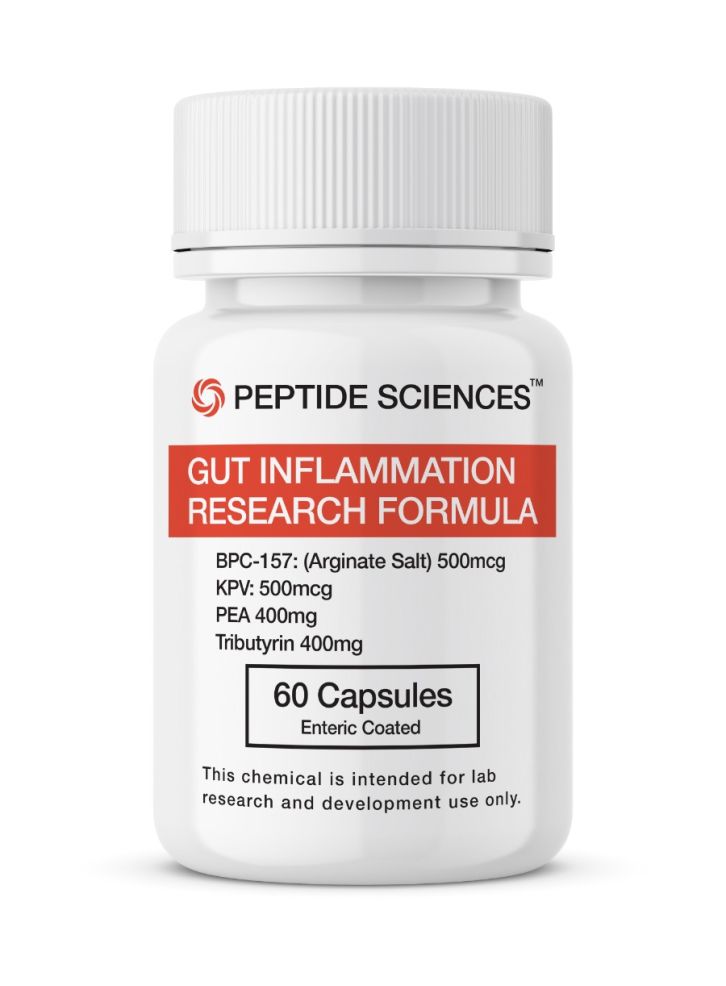
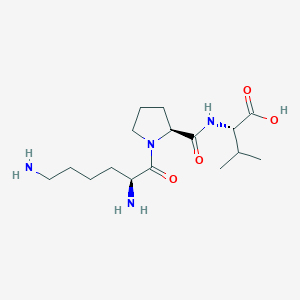
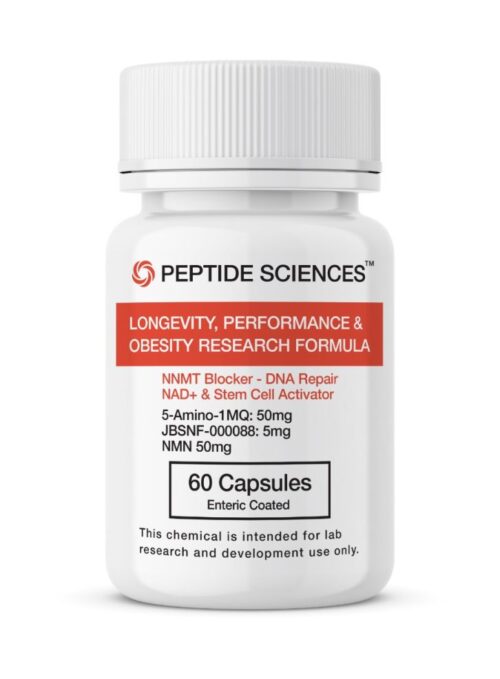
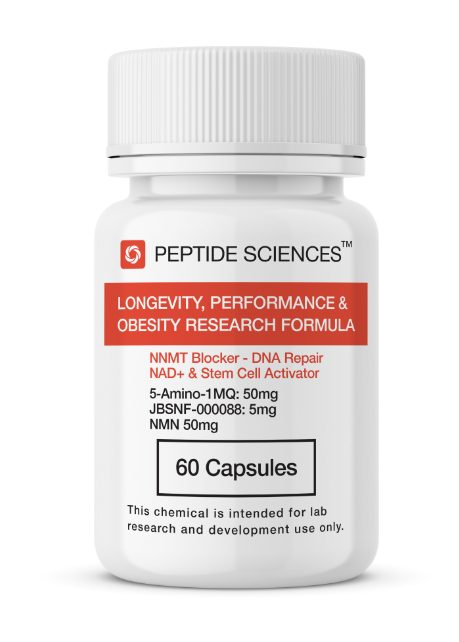
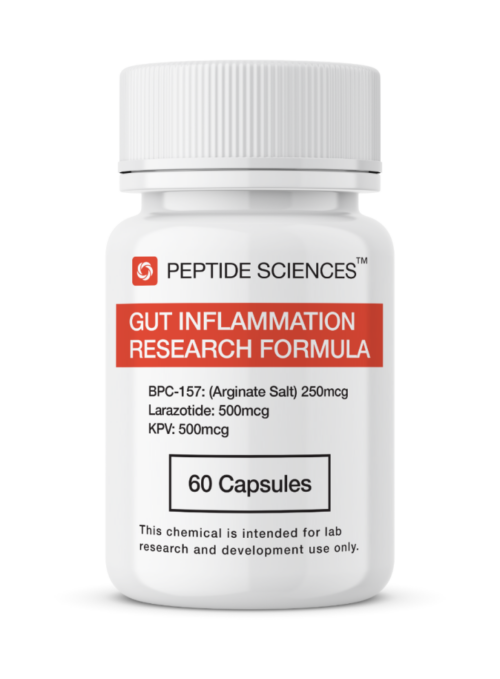

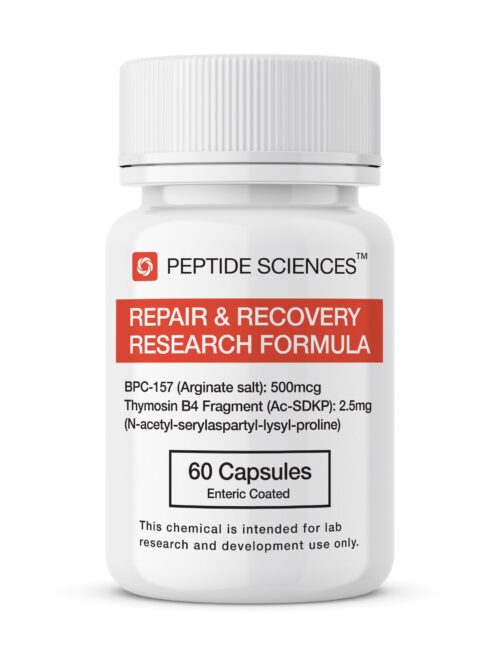
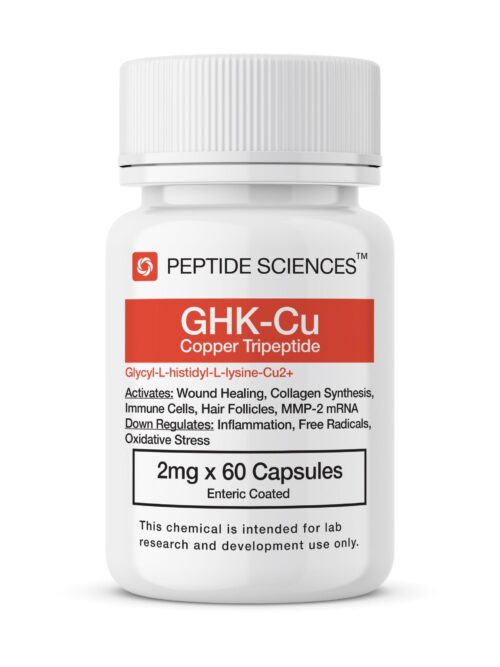
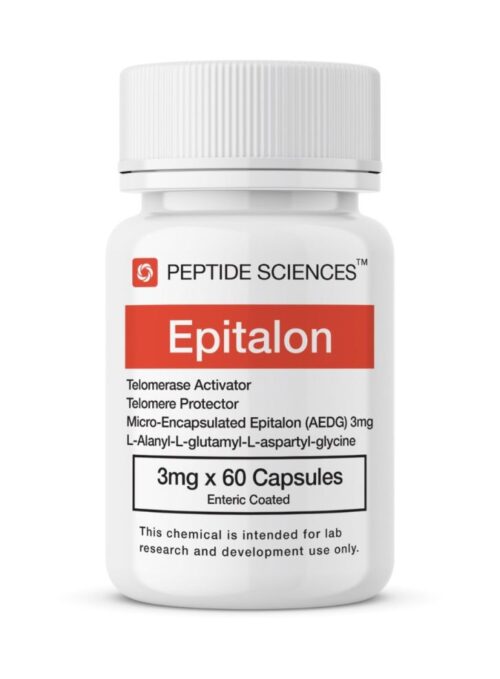
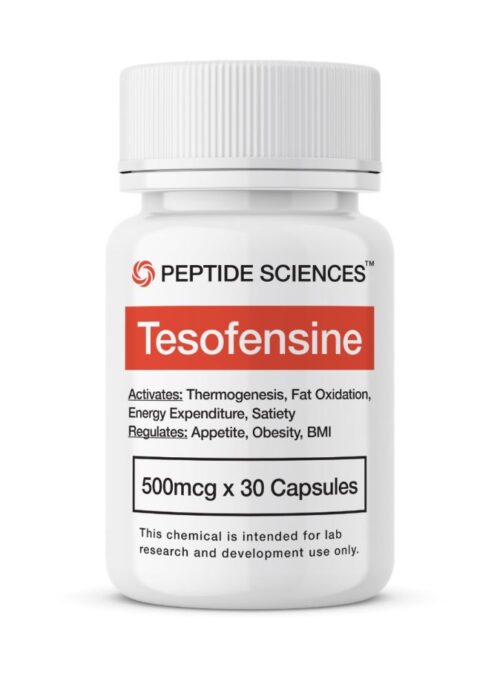
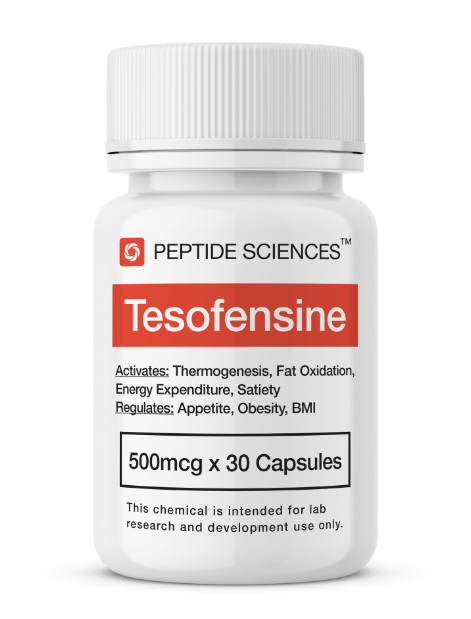
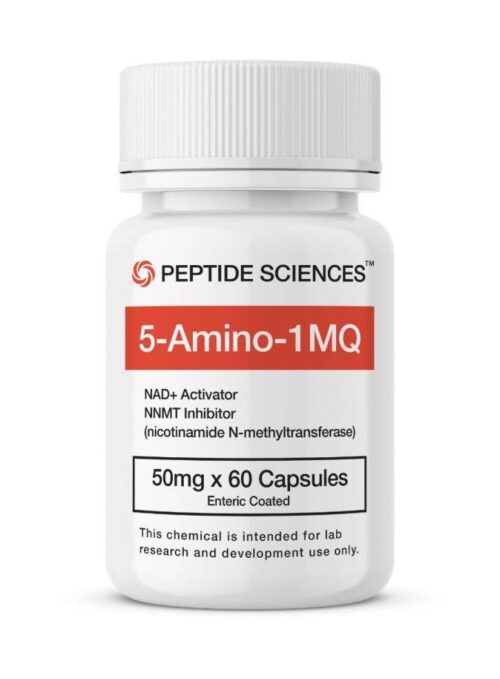
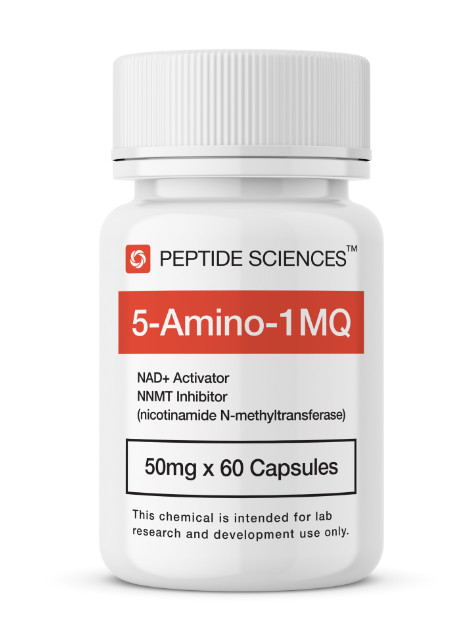
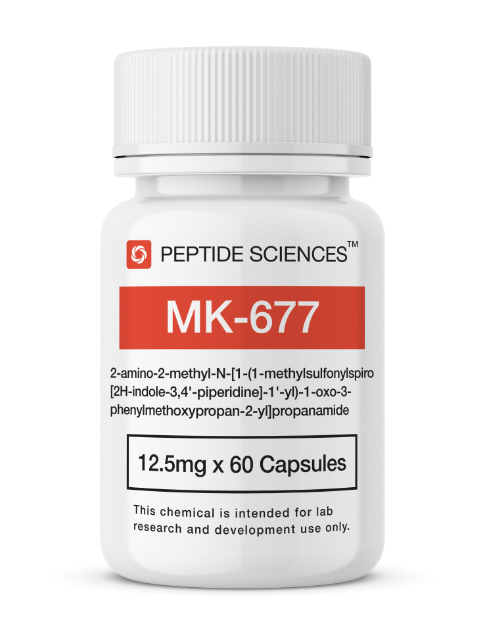

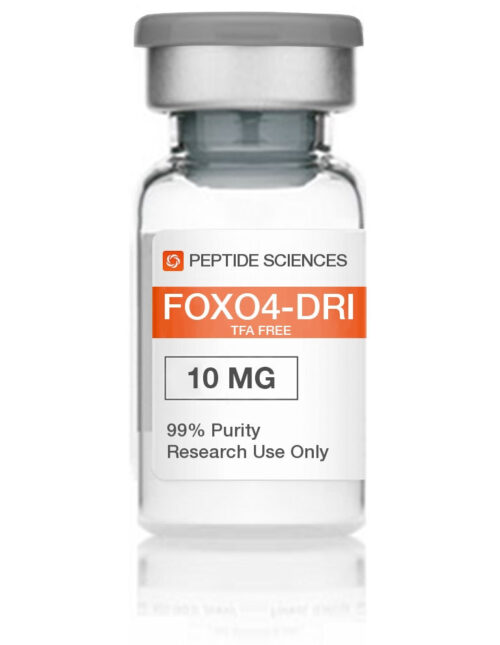
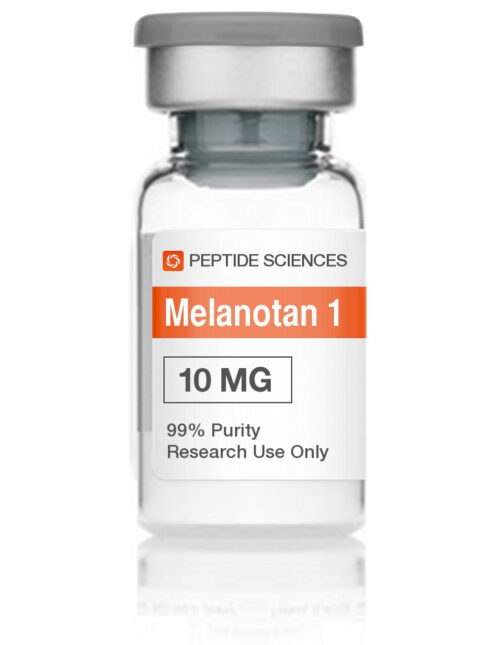
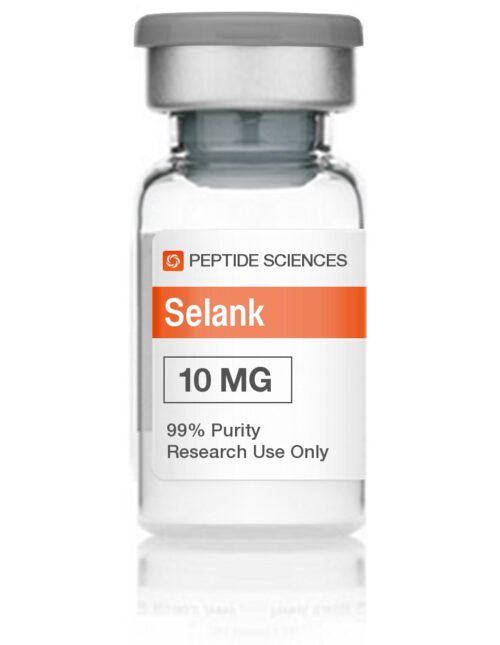

Reviews
There are no reviews yet.